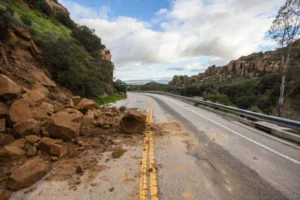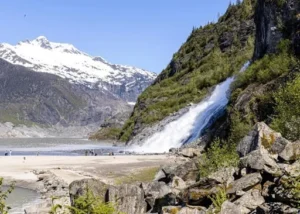Rural development in Alaska is reshaping its economic landscape by reflecting unique challenges and opportunities in remote rural areas. The economy of rural Alaska, particularly in villages, differs significantly from urban areas, with a heavy reliance on federal and state transfers, high costs, and limited job opportunities. The region’s economy is intertwined with subsistence practices, Alaska native culture, and challenges in infrastructure and basic services.
Rural Development Initiatives in Alaska
Rural development in Alaska is a complex and multifaceted endeavor, with various initiatives and strategies aimed at reshaping the economic landscape of remote communities. Here are some key ways in which rural development is transforming Alaska’s economy:
Diversifying the Economy
Alaska’s economy has traditionally relied heavily on resource extraction, such as oil, gas, and mining. Rural development efforts are focused on diversifying the economic base by promoting alternative industries, including:
- Renewable energy projects: Investments in wind, solar, and hydroelectric power to reduce reliance on costly diesel fuel and foster sustainable energy solutions.
- Ecotourism and outdoor recreation: Leveraging Alaska’s natural beauty and wilderness to attract visitors and create new economic opportunities.
- Fisheries and aquaculture: Expanding seafood processing, value-added products, and sustainable practices.
- Small-scale manufacturing and entrepreneurship: Supporting the growth of local businesses and cottage industries.
Improving Infrastructure and Connectivity
Addressing the significant infrastructure gaps in rural Alaska is a crucial aspect of rural development. Initiatives include:
- Upgrading transportation networks: Improving roads, airports, and ports to facilitate the movement of goods and people.
- Expanding broadband and telecommunications: Investing in high-speed internet and communication services to enable remote work, education, and access to essential services.
- Enhancing energy systems: Developing reliable and affordable energy sources, such as microgrids and renewable energy systems, to power rural communities.
Strengthening Community Resilience
Rural development in Alaska also focuses on building community resilience and self-sufficiency. Strategies include:
- Supporting traditional subsistence activities: Preserving and promoting Alaska Native cultural practices, such as hunting, fishing, and gathering, which are integral to the local economy and food security.
- Developing local workforce and skills: Investing in education, training, and skill-building programs to empower rural residents and create a skilled local workforce.
- Fostering community-based decision-making: Engaging local stakeholders in the planning and implementing of development projects to ensure they align with community needs and priorities.
Leveraging Partnerships and Funding

Successful rural development in Alaska often relies on collaborative efforts and strategic partnerships, including:
- Collaborations between state, federal, and tribal governments: Coordinating resources and aligning policies to address the unique challenges of rural communities.
- Public-private partnerships: Leveraging private sector investments and expertise to complement public funding and initiatives.
- Nonprofit and philanthropic support: Accessing grants, technical assistance, and other resources from organizations focused on rural development and community empowerment.
Sustainability Strategies for Alaska’s Future
Sustainability strategies for Alaska’s future are about finding smart ways to build a strong, eco-friendly economy. Here are some important ways to do that:
- Technology Innovation: Alaska is using new technology, such as autonomous machines and energy from the sun and wind, to help Alaskans use resources more efficiently and produce less pollution.
- Community Empowerment: These new ideas must come from those who live here and respect our traditions. Alaska wants to keep special knowledge and values while finding new ways to do things.
- Blue Economy Development: Alaska is finding smart ways to do business in the Arctic without hurting the environment. This includes using robots and making fuel from things that won’t run out.
- Resilient Infrastructure: Alaska is ensuring our towns and cities are ready for anything, like storms or changes in the weather. They are using new technology, like solar power and better health services, to ensure they bounce back quickly.
- Agile Technology Policy: They make rules that help people use new technology in the best way possible. This means making sure everyone knows how to use it, keeping information safe, and making sure it’s fair for everyone.
Conclusion
By addressing these key areas, rural development in Alaska aims to create more resilient, self-sufficient, and economically diverse communities, ultimately reshaping the state’s economic landscape and improving the quality of life for its rural residents.
FAQS
What percentage of Alaska is rural?
31.1% to 62.9%.
How is life different in rural Alaska communities?
Life in rural Alaska communities differs notably from other rural areas in the United States due to limited road access, smaller populations, lower incomes, and heavy reliance on subsistence activities. Demographically, rural Alaska has more Alaska Natives and a younger population, and it lacks basic infrastructure, leading to challenges in accessing essential services like hospitals and reliable electricity.
Do people in rural Alaska have Internet?
Yes, people in rural Alaska have access to the Internet, but the quality and affordability of Internet services in rural Alaska have historically been limited compared to urban areas.












